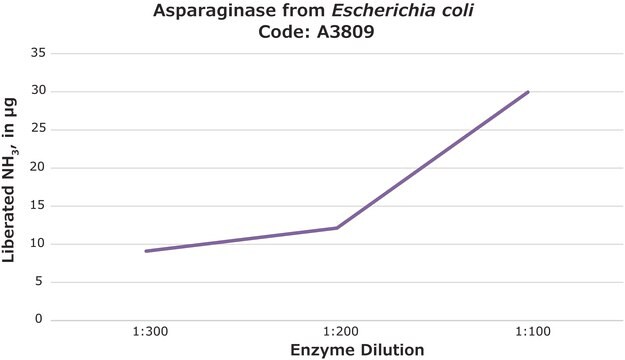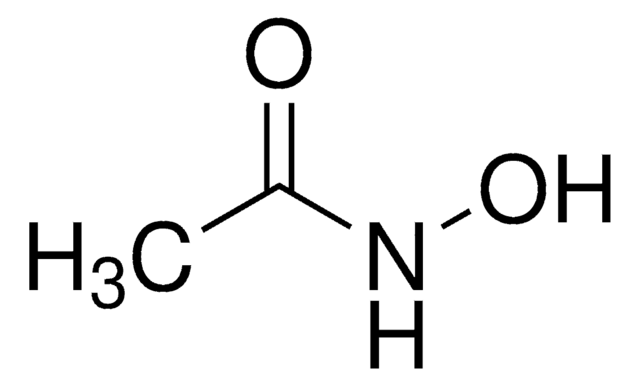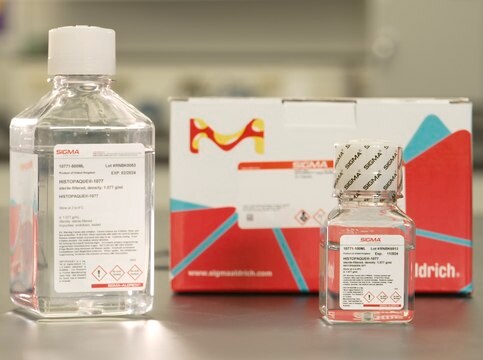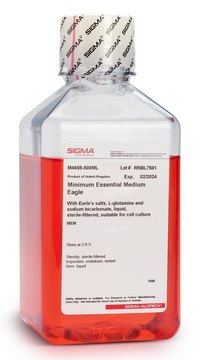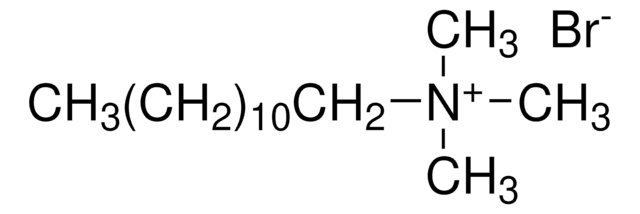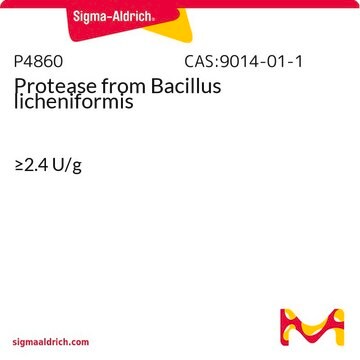A6508
L-Aspartic acid β-hydroxamate
>98%
Sinonimo/i:
AAH, HDX, LAH
Autenticatiper visualizzare i prezzi riservati alla tua organizzazione & contrattuali
About This Item
Formula empirica (notazione di Hill):
C4H8N2O4
Numero CAS:
Peso molecolare:
148.12
Numero MDL:
Codice UNSPSC:
12352209
eCl@ss:
32160406
ID PubChem:
NACRES:
NA.26
Prodotti consigliati
Nome del prodotto
L-Aspartic acid β-hydroxamate, serine racemase inhibitor
Livello qualitativo
Saggio
>98%
Stato
powder
Colore
white to yellow
applicazioni
detection
Temperatura di conservazione
−20°C
Stringa SMILE
N[C@@H](CC(=O)NO)C(O)=O
InChI
1S/C4H8N2O4/c5-2(4(8)9)1-3(7)6-10/h2,10H,1,5H2,(H,6,7)(H,8,9)/t2-/m0/s1
ZBYVTTSIVDYQSO-REOHCLBHSA-N
Categorie correlate
Codice della classe di stoccaggio
11 - Combustible Solids
Classe di pericolosità dell'acqua (WGK)
WGK 3
Punto d’infiammabilità (°F)
Not applicable
Punto d’infiammabilità (°C)
Not applicable
Dispositivi di protezione individuale
Eyeshields, Gloves, type N95 (US)
Scegli una delle versioni più recenti:
Possiedi già questo prodotto?
I documenti relativi ai prodotti acquistati recentemente sono disponibili nell’Archivio dei documenti.
I clienti hanno visto anche
N Thomasset et al.
International journal of cancer, 49(3), 421-424 (1991-09-30)
D and L isomers of aspartic acid beta-hydroxamate (respectively DAH and LAH) were compared for their in vitro and in vivo activity against the murine leukemia L5178Y and their tolerance in vivo in DBA/2 mice. DAH and LAH displayed comparable
Jie Zheng et al.
Nature communications, 8(1), 923-923 (2017-10-17)
The vitamin D receptor/retinoid X receptor-α heterodimer (VDRRXRα) regulates bone mineralization via transcriptional control of osteocalcin (BGLAP) gene and is the receptor for 1α,25-dihydroxyvitamin D
Daniel Sepúlveda-Crespo et al.
Nanomedicine : nanotechnology, biology, and medicine, 13(1), 49-58 (2016-08-27)
Hepatitis C virus (HCV) infection is a major biomedical problem worldwide. Although new direct antiviral agents (DAAs) have been developed for the treatment of chronic HCV infection, the potential emergence of resistant virus variants and the difficulties to implement their
Lidia Mingorance et al.
PLoS pathogens, 14(9), e1007284-e1007284 (2018-09-19)
Hepatitis C virus (HCV) infection constitutes a significant health burden worldwide, because it is a major etiologic agent of chronic liver disease, cirrhosis and hepatocellular carcinoma. HCV replication cycle is closely tied to lipid metabolism and infection by this virus
Eric R. Braverman
The Healing Nutrients Within: Facts, Findings, and New Research on Amino Acids null
Il team dei nostri ricercatori vanta grande esperienza in tutte le aree della ricerca quali Life Science, scienza dei materiali, sintesi chimica, cromatografia, discipline analitiche, ecc..
Contatta l'Assistenza Tecnica.
